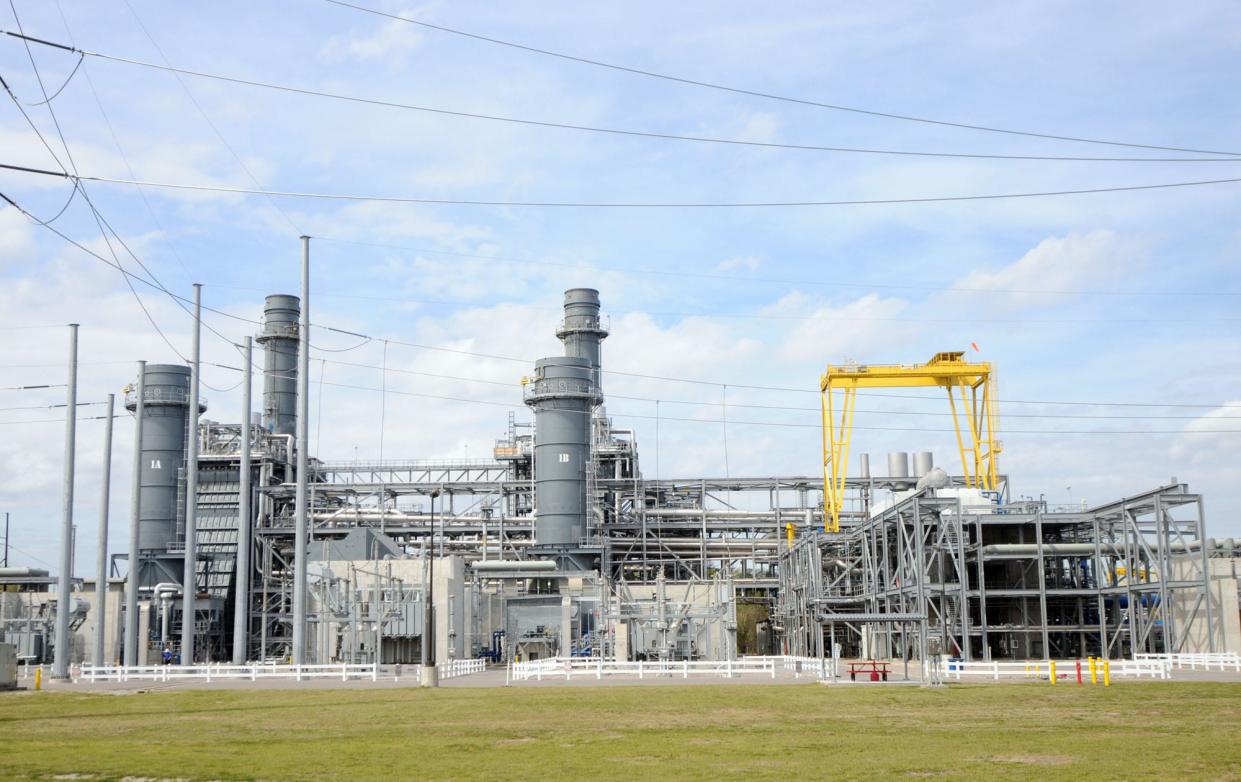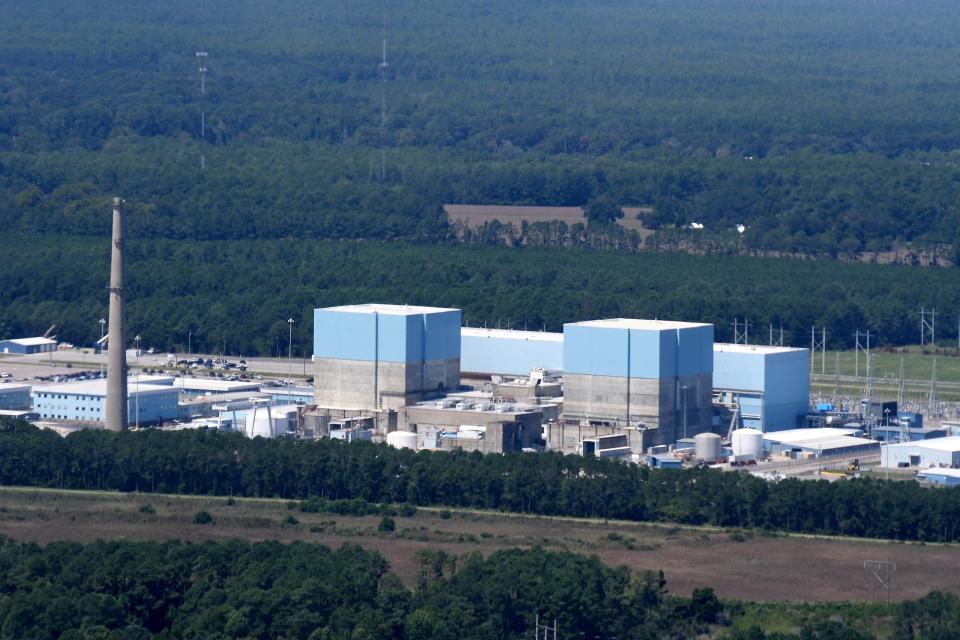As 2023 draws closer so does a decision on North Carolina's energy future

- Oops!Something went wrong.Please try again later.
As temperatures fall, the aroma of turkey fills the air, and Christmas decorations begin to reappear after their long slumber, it might be natural for North Carolinians to not pay attention to the happenings in Raleigh.
But in the next few weeks before the calendar turns to 2023, a little-known board could soon decide the how the state is going to keep its lights on for the foreseeable future. And that decision could hit consumers in their pocketbooks for decades to come.
The N.C. Utilities Commission has a mandate to come up with what mix of power sources the state will adopt to help it meet a legislative goal to reduce carbon emissions by Dec. 31. Under the bill hashed out by Democratic Gov. Roy Cooper, the GOP-controlled General Assembly, and Duke Energy last year, the Tar Heel State committed to reduce carbon emissions by 70% from 2005 levels by 2030 and to reach carbon neutrality by 2050.
More:Powering up: Why the nuclear company founded by Bill Gates is coming to Wilmington
The move away from traditional power sources, such as coal-fired power plants, is a result of rising concerns over the amount of greenhouse gases humans have and are still pumping into the atmosphere. As the planet warms and humans continue to send more heat-trapping pollutants into the sky, climatologists are issuing increasingly dire warnings that the window to keep sea-level rise and future temperature increases to a manageable amount is rapidly shrinking.
According to the U.S. Energy Information Administration, North Carolina’s current energy mix based on 2021 data is 31% nuclear energy, 33% natural gas, 21% coal, and 15% renewables.
But while everyone supports building a de-carbonized power infrastructure, there is heated debate on what is the best way to get there while meeting the stated goals of minimizing costs while maximizing reliability.
Duke, as the state's largest utility has submitted several "pathways" to the N.C. Utilities Commission, to meet the carbon-reduction goal.
POWER OUTAGECould the slowing economy take the financial wind out of NC's offshore wind farms?
Retiring all of Duke's remaining coal-fired power plants — the biggest polluters in its inventory — is included in all of Duke's proposed plans. But there are differences of opinion on what the old fossil fuel plants should be replaced with and how quickly.
One of the key sticking points is how much of a role in North Carolina's future grid natural gas should play. Duke says natural gas is a proven, plentiful and safe domestic energy source − an emerging concern after Russia's move to hold Europe hostage over its military support for Ukraine by reducing gas supplies to the West − that can power homes when the sun isn't shining or the wind isn't blowing. It would also allow the utility company to keep the lights on while still meeting the statutory reduction requirements while keeping costs under control and stockholders happy.

But environmentalists and supporters of renewable energy sources say natural gas, while cleaner than coal, is still a much dirtier fuel source than other options like wind and solar. Building additional natural gas plants would also tie North Carolina into using natural gas for decades to come due to the stranded costs associated with the new plants and associated infrastructure, limiting its move toward a "green" grid.
More than three dozen scientists submitted a letter to Duke and Gov. Roy Cooper earlier this month that called for no new natural gas plants in North Carolina.
"We, the undersigned scientists, respectfully seek your action to halt plans for greatly increasing the use of natural gas in coming decades to generate electricity," the letter states. "Such plans are completely out of step with the science reflecting the urgent need to phase out fossil fuels, and with North Carolina’s efforts to help slow the climate change that has increasingly harmed thousands of state residents."
Opponents of natural gas also note that the cost of renewables is continuing to tumble as more solar and wind projects are built, reducing the upfront capital costs that are usually the most expensive parts of the project.
They also claim better battery storage technology and falling prices is also chipping away at one of the biggest knocks against renewables, that they aren't reliable to power a grid when it's cloudy or there's no wind.
Duke Energy also is proposing to include up to 11.9 gigawatts of solar in its future grid plans. Offshore wind is also included in most of the "pathways" proposed by Duke to reach the carbon reduction goals. But offshore wind has run into economic headwinds in recent weeks, with projects further along the development pipeline than the three proposed for off North Carolina's coastal waters, one off the Outer Banks and two south of Bald Head Island in Brunswick County, being paused or delayed. Officials, however, expect those financial uncertainties to have been ironed out by the time the Tar Heel State's projects are close to breaking ground later this decade.
PEDAL POWERAs e-bikes surge in popularity, is North Carolina ready to share the road with them?
Several environmental and clean energy groups joined together to submit their own carbon reduction plan, which is heavy on renewables and doesn't include any new nuclear or natural gas plants, that reaches the 2030 reduction goal.
Other hot-button issues that have been raised before the utilities commission include:
∎ Allowing Duke to skirt the 2030 deadline to meet the goal of reducing carbon emissions by 70% by up to five years. The utility says this could be a more prudent, realistic and cost-effective objective while environmentalists claim the goal can be met now by the robust adoption of renewables.
∎ Duke's proposal to include small modular nuclear reactors and hydrogen into its future power generation mix. Duke said this added diversity will help it meet the carbon-reduction bill's reliability and least-cost mandates. Opponents says these are immature, potentially dangerous technologies that increase rate payers bills due to their high costs.
∎ Language in the legislation that would allow the commission to delay the 70% reduction target under certain circumstances, including "to allow for implementation of solutions that would have a more significant and material impact on carbon reduction."
Reporter Gareth McGrath can be reached at GMcGrath@Gannett.com or @GarethMcGrathSN on Twitter. This story was produced with financial support from 1Earth Fund and the Prentice Foundation. The USA TODAY Network maintains full editorial control of the work.
This article originally appeared on Wilmington StarNews: The NC Utilities Commission soon to announce state's energy future

